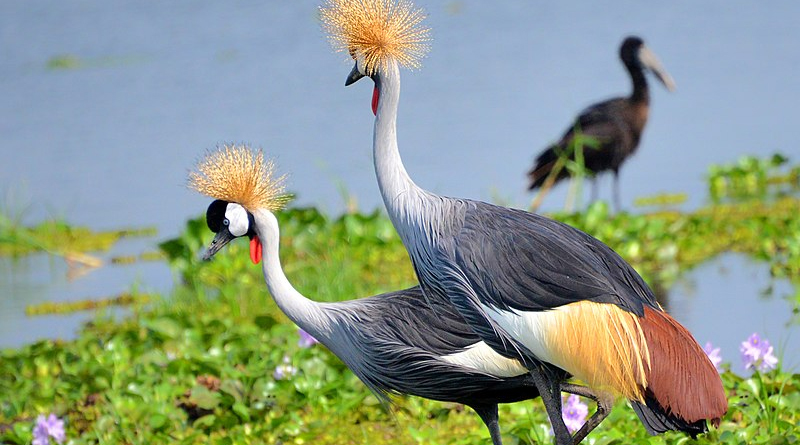GREY CROWNED CRANES IN KENYA
The Grey Crowned Crane (Balearica regulorum) is the world’s fastest disappearing crane. Found only in sub-Saharan Africa, the Grey Crowned Crane was once common in the wetlands of Democratic Republic of Congo through to Eastern Africa and stretching down to South Africa.
Today, Kenya is a stronghold but even there, populations have halved in the last five decades.
The National Museums of Kenya, the country’s leading research organization is now organising the first nation-wide census of the Grey Crowned Crane. This will determine the present population of this endangered bird. Partnering with NMK is the Nature and Biodiversity Conservation Union (NABU) one of Germany’s oldest and largest environment associations with the International Crane Foundation/Endangered Wildlife Trust Partnership (S. Africa). and volunteers.
The country-wide count look place between 25th February and 8 March 2019.
The count is a sequel to a preliminary count in 2017 which showed that the population of Grey Crowned Cranes is fewer than 10,000 individuals. Estimates from earlier records show a 50 per cent decline over the last five decades. Conservationists and scientists are alarmed at the drastic drop and fear that their numbers may now be less than the count in 2017.
The reason for this decline is manifold: The Grey Crowned Crane lays its eggs in wetlands, forages in grasslands and roosts on tall trees. As wetlands are drained, grasslands converted for infrastructure and forests denuded, the stately bird is losing its habitat. The dilemma is exacerbated by poaching for the illegal and barbaric trade in live cranes on the international market for exotic pets and locally for bush meat.
Wanyoike Wamiti, Research Scientist at Zoology Department of the National Museums of Kenya coordinating the count states: ‘Grey Crowned Cranes are only found in Africa. Of the 15 species of cranes surviving in the world today, the Grey Crowned Crane is decreasing the fastest.”
Even though Kenya is a stronghold, conservationists in Kenya are concerned about the rapid decline of the bird in the wild.
Wamiti adds, “The nation-wide count will help determine the current population of the Grey Crowned Crane. It is very important to have these counts on a regular basis to monitor the population trends and threats. These are crucial for appropriate conservation measures by various organisations and government agencies if we are to save the species from becoming locally extinct.”
For further information about the National Museums of Kenya Ornithology Section, please visit museums.or.ke/ornithology-section/
FACT BOX
The Nature and Biodiversity Conservation Union (NABU) was founded in 1899. With more than 700,000 members and supporters, it is Germany’s oldest and largest environmental organization. NABU manages conservation projects in Kenya, Rwanda, Europe and Asia, as well as providing financial support to various partner projects around the world.
The International Crane Foundation seeks to help safeguard Africa’s cranes through community-based research and conservation programs that benefit both people and wildlife.
Endangered Wildlife Trust is at the forefront of monitoring threatened species, research, and establishing safe spaces for wildlife expansion.
FEATURED IMAGE: By Rod Waddington

